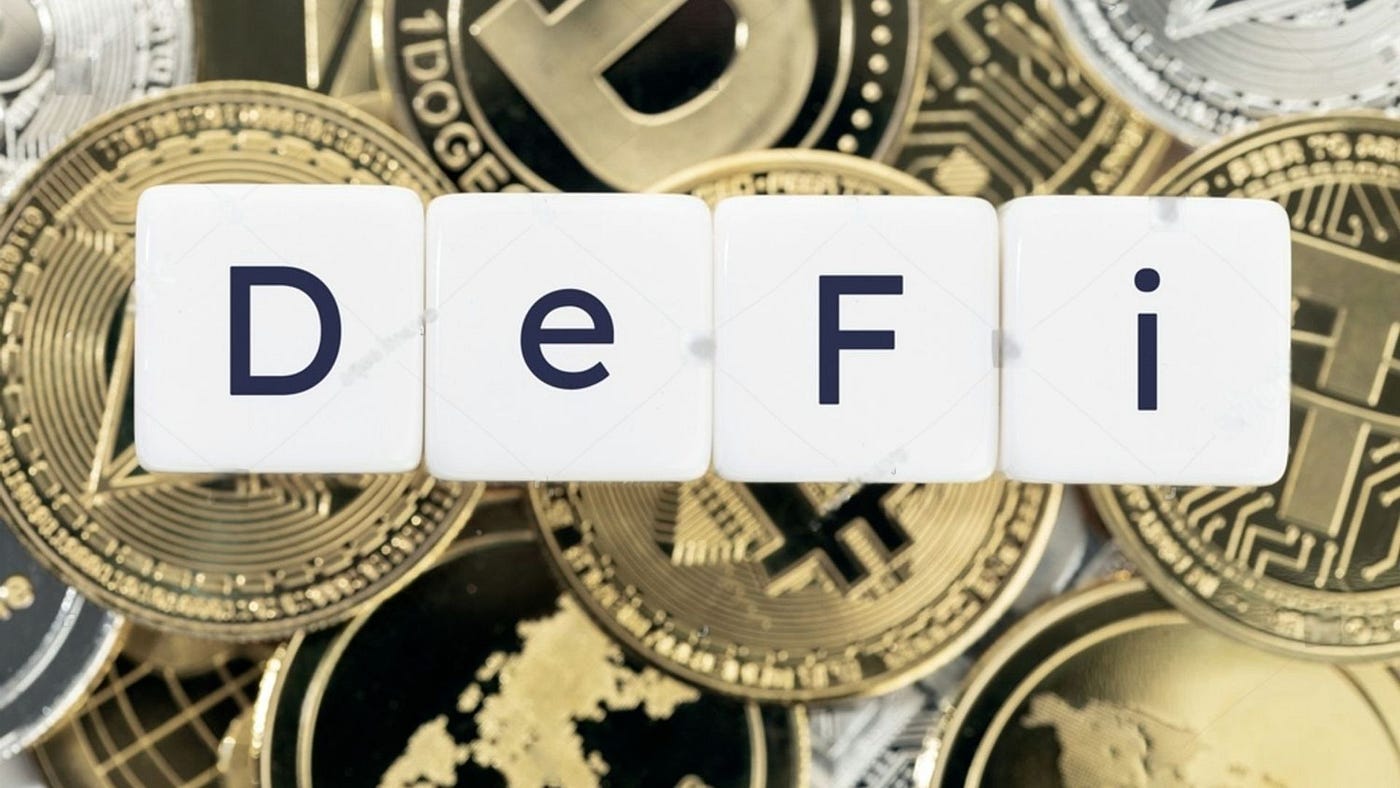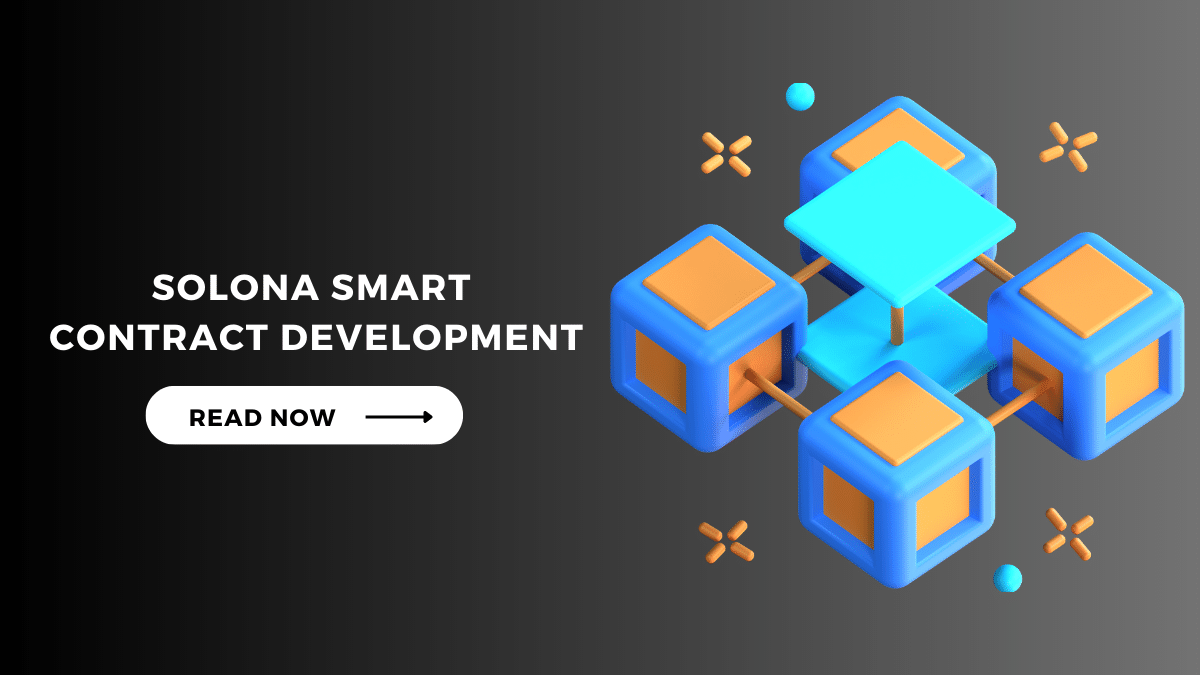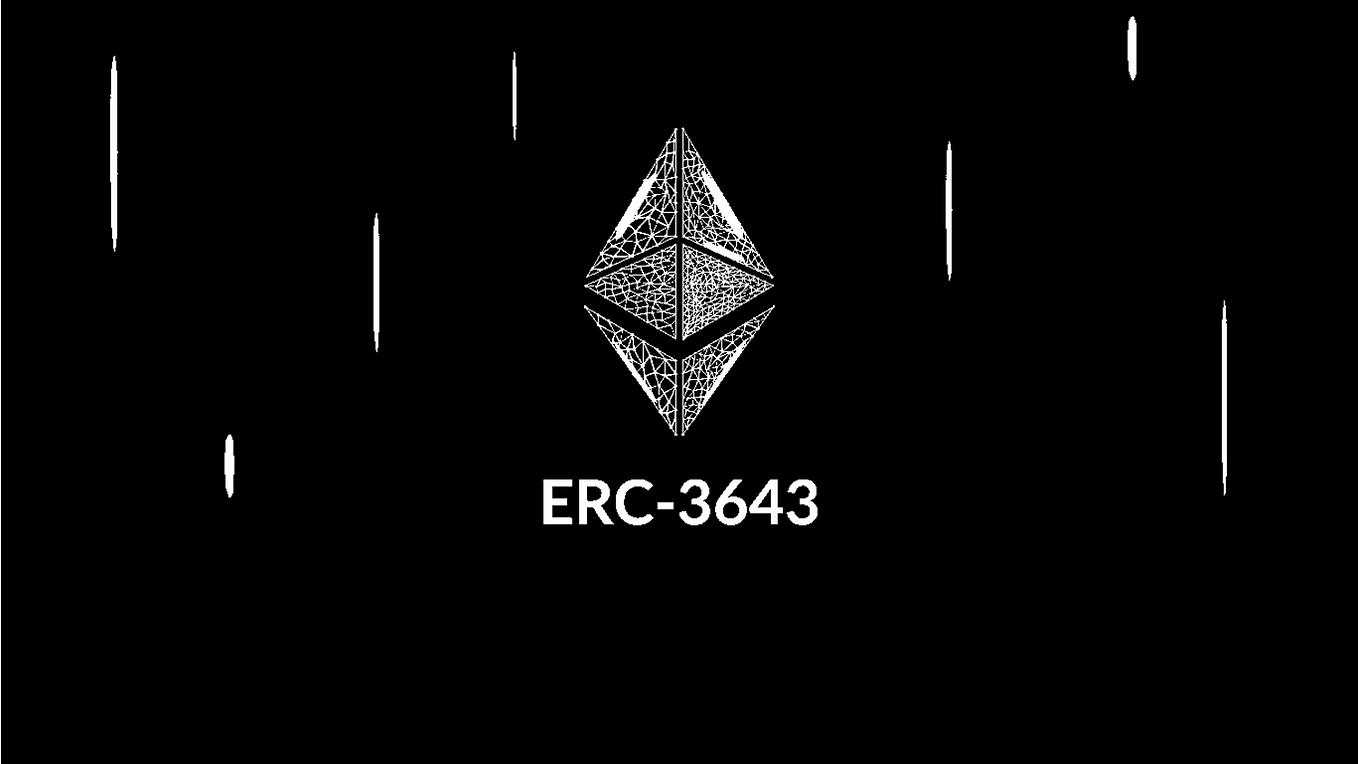Token Workshop Chronicles: A Closer Look at Cryptocurrency Token Development
Top 5 DeFi Liquidity Pool Platforms Are Enabling Interoperability In 2024

 Cathrine Williams
Cathrine Williams
·
Follow
Published in
Coinmonks
10 min read
·
3 days ago
Listen
Share
More Fig: DeFi Liquidity Pool Platforms
Fig: DeFi Liquidity Pool Platforms
Decentralized Finance, commonly known as DeFi, has revolutionized the financial landscape by bringing transparency, accessibility, and inclusivity to the world of traditional finance. One of the cornerstones of the DeFi ecosystem is the concept of Liquidity Pools, which serve as the lifeblood of decentralized exchanges. In this exploration, we delve into the realm of the best DeFi liquidity pool platforms, uncovering the key players driving innovation and reshaping the financial future.
Understanding DeFi Liquidity Pools:
DeFi liquidity pools are smart contract-driven mechanisms that allow users to contribute their assets to a pool, providing liquidity for decentralized exchanges. These pools facilitate seamless trading without the need for traditional intermediaries, allowing users to earn passive income through transaction fees and other incentives.
The Future of DeFi Liquidity Pools:
As the DeFi landscape continues to evolve, liquidity pool platforms are likely to witness further innovations, addressing scalability concerns and introducing advanced financial instruments. Interoperability between different blockchain networks and increased security measures will play a crucial role in shaping the future of these platforms.
In this ongoing exploration of DeFi liquidity pool platforms, we will navigate through the intricacies of each platform, shedding light on their unique features, challenges, and contributions to the broader DeFi ecosystem. Join us on this journey as we uncover the transformative potential of decentralized finance and the liquidity pool platforms propelling it forward.
How do DeFi Liquidity Pools Work?
DeFi Liquidity Pools operate on the principles of decentralized finance, utilizing smart contracts to facilitate the exchange of assets without the need for traditional intermediaries like banks or brokers. These pools form the backbone of decentralized exchanges, allowing users to trade various tokens seamlessly. Let’s delve into the workings of DeFi Liquidity Pools:
1. Automated Market Makers (AMMs):
- DeFi Liquidity Pools typically follow the Automated Market Maker (AMM) model. AMMs use algorithms and smart contracts to determine the price of assets based on the supply and demand within the pool.
- Unlike traditional order book models, where prices are determined by bids and ask, AMMs rely on a constant algorithmically determined price that adjusts based on the ratio of assets in the liquidity pool.
2. Providing Liquidity:
- Users can participate in DeFi liquidity pools by depositing pairs of assets into a smart contract. These pairs usually consist of a base asset (e.g., ETH) and a quote asset (e.g., DAI). The smart contract then mints a corresponding amount of liquidity tokens, representing the user’s share in the pool.
- The liquidity provider earns fees from trades within the pool in proportion to their share of the total liquidity. These fees are distributed automatically through the smart contract.
3. Impermanent Loss:
- Liquidity providers are exposed to the concept of impermanent loss, which occurs when the price of the deposited assets changes compared to when they were initially added to the pool. This loss is temporary and diminishes as the market prices converge.
- Automated mechanisms, such as the constant product formula used by AMMs, aim to minimize impermanent loss.
4. Trading on DeFi Platforms:
- Traders can execute transactions directly through the liquidity pool, interacting with the smart contract. When a trade occurs, the pool’s algorithm adjusts the asset prices based on the mathematical model, ensuring that the trading pair’s value remains in equilibrium.
- A portion of the trading fees incurred in these transactions is distributed among liquidity providers, incentivizing users to contribute assets to the pool.
5. Governance and Upgrades:
- Many DeFi liquidity pools incorporate governance tokens, allowing participants to have a say in the platform’s decision-making processes. Holders of these tokens can propose and vote on changes, upgrades, or modifications to the protocol.
- Upgrades to the smart contracts or changes to the protocol are typically subject to a consensus mechanism, ensuring that the community is in agreement before implementing significant changes.
6. Flash Loans and Arbitrage Opportunities:
- DeFi liquidity pools can be leveraged for flash loans, where users borrow assets without collateral, execute a series of transactions to exploit price differentials, and repay the loan within the same transaction.
- Arbitrage opportunities arise as traders exploit price variations between different decentralized exchanges or liquidity pools, contributing to the efficiency and liquidity of the overall DeFi ecosystem.
In essence, DeFi Liquidity Pools democratize access to financial services, allowing users to contribute and benefit from the liquidity of various assets while maintaining a decentralized and trustless environment through smart contracts and blockchain technology.
Benefits of DeFi Liquidity Pools
DeFi Liquidity Pools offer a range of benefits that contribute to the growth and appeal of decentralized finance. Here are some key advantages:
- Decentralization:
DeFi Liquidity Pools operate on blockchain technology, eliminating the need for centralized intermediaries like banks. This decentralized nature ensures that users have direct control over their funds, reducing the risk of censorship or third-party control.
- Accessibility:
DeFi Liquidity Pools provide financial services to a global audience without the need for traditional banking infrastructure. Anyone with an internet connection can participate, enabling financial inclusion for individuals who may not have access to traditional banking systems.
- Liquidity Provision:
Liquidity pools enhance market liquidity by allowing users to contribute their assets to the pool, facilitating smoother and more efficient trading. This increased liquidity reduces slippage and makes it easier for traders to execute transactions at more predictable prices.
- Earning Passive Income:
Liquidity providers in DeFi earn passive income through transaction fees generated by trades within the pool. This incentivizes users to contribute their assets to the pool, creating a symbiotic relationship between liquidity providers and traders.
- Incentive Mechanisms:
DeFi platforms often incorporate governance tokens and liquidity mining programs to incentivize users to participate in liquidity pools. These tokens can be staked, providing holders with voting rights to influence the platform’s development and governance decisions.
- Open Financial Ecosystem:
DeFi Liquidity Pools facilitate a wide range of financial activities beyond simple trading, including lending, borrowing, and yield farming. Users can leverage their assets in innovative ways, creating a more open and diverse financial ecosystem.
- Programmability and Smart Contracts:
The use of smart contracts allows for programmable and customizable financial services. DeFi platforms can create complex financial instruments, automated trading strategies, and decentralized applications (DApps), offering users a high degree of flexibility and control over their financial activities.
- Transparency:
All transactions within DeFi Liquidity Pools are recorded on the blockchain, providing a transparent and immutable record of all activities. Users can verify and audit transactions, ensuring trust in the system and reducing the risk of fraudulent activities.
- Global Interoperability:
DeFi Liquidity Pools can operate across different blockchain networks, promoting interoperability. This allows users to access liquidity and financial services across various ecosystems, fostering a more connected and collaborative decentralized finance space.
- Innovation and Experimentation:
The decentralized nature of DeFi encourages innovation and experimentation. Developers can create and deploy new financial products and services without the need for approval from centralized authorities, leading to a dynamic and rapidly evolving ecosystem.
While DeFi Liquidity Pools offer numerous benefits, it’s important to note that they also come with certain risks and challenges, such as smart contract vulnerabilities, market volatility, and regulatory uncertainties. Users should exercise caution and conduct thorough research before participating in DeFi activities.
Factors to be Considered when Choosing the Best DeFi Liquidity Pools
Selecting the best DeFi Liquidity Pool requires careful consideration of various factors to ensure a balanced risk-reward profile and a positive user experience. Here are key factors to consider:
-> Platform Reputation:
Evaluate the reputation and track record of the DeFi platform hosting the liquidity pool. Look for platforms with a history of security, reliability, and positive user experiences. Community feedback and reviews can provide valuable insights.
-> Security Measures:
Security is paramount in the decentralized space. Assess the security features implemented by the platform, such as smart contract audits, bug bounty programs, and any past security incidents. Choose platforms that prioritize and invest in robust security measures.
-> Liquidity Depth:
Higher liquidity depth reduces slippage and enhances trading efficiency. Consider the size and activity of the liquidity pool, as larger pools often provide better liquidity. Look for platforms that attract a significant user base and trading volume.
-> Returns and Fees:
Understand the returns offered to liquidity providers, which are typically generated through transaction fees. Additionally, be aware of any fees associated with joining or exiting the liquidity pool. Compare these returns and fees across different platforms.
-> Impermanent Loss Mitigation:
Impermanent loss can impact liquidity providers during price fluctuations. Some platforms implement mechanisms to mitigate impermanent loss, such as dynamic fee structures, token rewards, or other innovative strategies. Assess how well a platform addresses this concern.
-> Governance Mechanism:
Examine the governance structure of the platform, especially if it involves a native governance token. Understand how decisions are made, who has voting power, and whether the community has a meaningful role in the platform’s development. Transparent governance enhances decentralization.
-> Tokenomics and Incentives:
Evaluate the tokenomics of any native tokens associated with the liquidity pool. Consider factors like distribution, utility, and whether there are incentives for holding or staking tokens. Tokenomics can influence the long-term viability and attractiveness of a platform.
-> Smart Contract Audits:
Prioritize platforms that have undergone thorough smart contract audits by reputable third-party firms. Audited contracts reduce the risk of vulnerabilities and exploits, enhancing the overall security of the liquidity pool.
-> Interoperability:
Consider the interoperability of the platform with other blockchain networks. Platforms that support multiple blockchains provide users with more flexibility and opportunities to access diverse liquidity pools.
-> Community and Developer Support:
Assess the strength of the platform’s community and developer support. A vibrant and engaged community, along with active development, indicates ongoing commitment and innovation. Check community forums, social media channels, and GitHub repositories for insights.
-> Regulatory Compliance:
Be aware of the regulatory environment surrounding the platform and the jurisdiction it operates in. Platforms that prioritize regulatory compliance and transparency can provide a more stable and trustworthy environment for users.
-> User Interface and Experience:
A user-friendly interface enhances the overall experience. Consider the design, functionality, and ease of use of the platform. Platforms with intuitive interfaces make it easier for users to navigate and engage with the liquidity pool.
-> Market Trends and Partnerships:
Stay informed about market trends and the platform’s partnerships. Platforms that adapt to evolving trends and collaborate with reputable projects or organizations may have a higher potential for long-term success.
It’s essential to conduct thorough research and due diligence before participating in any DeFi liquidity pool. Diversifying across multiple platforms and staying informed about updates and potential risks will contribute to a more informed and resilient investment strategy.
Top 5 Best DeFi Liquidity Pool Platforms
It’s important to note that the DeFi landscape is highly dynamic, and the status of platforms can change rapidly. It’s advisable to verify the current rankings and user sentiments before making any investment decisions. However, based on the popularity and positive reputation as of my last update, here are five notable DeFi liquidity pool platforms:
1. Uniswap:
- Description: Uniswap is a decentralized exchange (DEX) and a pioneer in the Automated Market Maker (AMM) space. It allows users to trade a wide range of ERC-20 tokens and provides liquidity through its liquidity pools.
- Key Features: User-friendly interface, high liquidity, and the introduction of governance with UNI tokens.
2. SushiSwap:
- Description: Built on the foundations of Uniswap, SushiSwap is a decentralized exchange and liquidity provision platform. It introduces additional features, such as yield farming and staking, to incentivize liquidity providers.
- Key Features: Community-driven governance, unique incentives for liquidity providers, and a variety of token pairs.
3. PancakeSwap:
- Description: Operating on the Binance Smart Chain, PancakeSwap is a decentralized exchange known for its low transaction fees and fast confirmation times. It mirrors many features of Uniswap and has gained popularity in the Binance Smart Chain ecosystem.
- Key Features: Low fees, high throughput, and a user-friendly interface.
4. Balancer:
- Description: Balancer is a DeFi platform that offers automated portfolio management through liquidity pools. It allows users to create or join pools with multiple tokens, providing liquidity while earning fees and BAL governance tokens.
- Key Features: Dynamic liquidity pools with multiple tokens, automated portfolio rebalancing, and governance participation.
5. Curve Finance:
- Description: Curve Finance is focused on stablecoin trading with low slippage. It aims to provide efficient liquidity for stablecoin swaps and has gained popularity for its role in decentralized finance stablecoin markets.
- Key Features: Specialized in stablecoin trading, low slippage, and a unique bonding curve.
Remember, the DeFi space is rapidly evolving, and new platforms may emerge or gain prominence over time. Always conduct thorough research, assess the current market conditions, and consider factors like security, fees, and governance before participating in any DeFi liquidity pools. Additionally, ensure you are aware of any updates or changes to these platforms since my last knowledge update in January 2022.
Conclusion
In conclusion, the world of decentralized finance (DeFi) liquidity pools represents a groundbreaking shift in the financial landscape, introducing a decentralized, open, and accessible alternative to traditional financial systems. The benefits of participating in DeFi liquidity pools, such as earning passive income, accessing a diverse range of financial services, and contributing to a more inclusive global financial ecosystem, make them an attractive option for many users.
As the DeFi space continues to evolve, users should approach participation in liquidity pools with a careful and informed mindset. Factors such as platform reputation, security measures, returns, impermanent loss mitigation, governance mechanisms, and user experience should be thoroughly considered. The dynamic nature of the DeFi landscape requires continuous vigilance and adaptation to changing market conditions.
Key platforms like Uniswap, SushiSwap, PancakeSwap, Balancer, and Curve Finance have emerged as notable players in the DeFi liquidity pool arena. However, it is crucial to stay updated on the latest developments, security audits, and community sentiments to make informed decisions.
While DeFi liquidity pools offer exciting opportunities, they also come with risks, including smart contract vulnerabilities, market volatility, and regulatory uncertainties. Users should exercise caution, diversify their investments, and stay informed about the inherent risks associated with participating in decentralized finance.
In navigating the ever-evolving DeFi landscape, users can contribute to the ongoing innovation and transformation of the financial industry, fostering a more decentralized, transparent, and inclusive future. As the DeFi ecosystem matures, it is likely to witness further advancements, and users can play an active role in shaping the future of decentralized finance.
Defi
Liquidity
Liquidity Pool
Liquidity Mining
Liquidity Management
 Follow
Follow
Written by Cathrine Williams
92 Followers
·
Writer for
Coinmonks
I'm Cathrine Williams, I have been writing about cryptocurrency and blockchain for 7 years. I'm expert in writing about new developments in the blockchain.
More from Cathrine Williams and Coinmonks

 Cathrine Williams
Cathrine Williams
in
Coinmonks
Solana Smart Contract Development: A Comprehensive Guide
This article will provide a comprehensive guide to Solana smart contract development, including an overview of Solana.
7 min read
·
Apr 4, 2023
31
 Johnwege
Johnwege
in
Coinmonks
Bitcoin is about To SHOCK the World
Bitcoin is about to shock the world, and it will be sooner than you think. This market will test your conviction, unlike anything you have…
·
6 min read
·
Jan 27
477
4
 Velvet.Capital
Velvet.Capital
in
Coinmonks
The DeFi Revolution Coming in 2023
The crypto winter is thawing. 2023 is off to a hot start & DeFi looks ripe to propel the sector to new heights. Will you be ready for it?
6 min read
·
Feb 23, 2023
15K
339
 Cathrine Williams
Cathrine Williams
in
Javarevisited
Tornado Cash Clone: The Ultimate Anonymous Ethereum Mixer!
Tornado Cash Clone is a decentralized solution that provides users with full anonymity on the Ethereum blockchain.
3 min read
·
Apr 22, 2023
5
1
See all from Cathrine Williams
Recommended from Medium

 Solid Quant
Solid Quant
100 hours of building a sandwich bot
A to Z: Build your own sandwich bot the right way
23 min read
·
5 days ago
185
3
 Ebunker
Ebunker
ERC-3643: Token Standard for Real-World Assets
The Concept of ERC-3643
6 min read
·
Dec 14, 2023
60
1
Lists


Staff Picks570 stories
·
703
saves

 Stories to Help You Level-Up at Work19 stories
Stories to Help You Level-Up at Work19 stories
·
451
saves

 Self-Improvement 10120 stories
Self-Improvement 10120 stories
·
1288
saves

 Productivity 10120 stories
Productivity 10120 stories
·
1176
saves
 Unicorn Ultra
Unicorn Ultra
in
Unicorn Ultra
What is BRC-20? How BRC-20 Tokens Are Revolutionizing The Bitcoin Blockchain
The cryptocurrency world has witnessed a significant development with the emergence of BRC-20 tokens, a novel token standard on the Bitcoin…
5 min read
·
Dec 21, 2023
365
 Rudy Wicaksono
Rudy Wicaksono
in
The Astar Bulletin | TAB
Vote Wisely
Soon in the very near future, dApp Staking v3 will be live on the Astar Network Portal. This will complete the final phase of Tokenomic…
4 min read
·
5 days ago
52 Atis E
Atis E
Uniswap v2: Still a Good Deal for Liquidity Providers? A Retrospective of 2023
This article looks into the Uniswap v2 WETH/USDC pool on the Ethereum mainnet, examining it from three angles: divergence loss, loss versus…
10 min read
·
Jan 22
20
 Ekko Nodes
Ekko Nodes
Run an Aleo Node
Aleo’s Mainnet Launch is Set for Early 2024. With $300M in Funding. Jumpstart your journey with Aleo’s testnet now. Set up your wallet…
5 min read
·
Jan 22
201
6













































